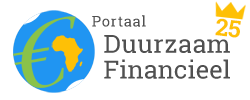Introduction
The EU Commission is developing a common green language for economic activities: the EU Taxonomy. One goal of the Taxonomy is to provide clear definitions in order to help stop greenwashing and to direct future public and private investments to economic activities that will help achieve the EU’s environmental objectives.
The EU Taxonomy is a living document that is constantly evolving. Last year, RaboResearch published a special explaining how the EU Taxonomy works. Now the EU commission has published the next step in the evolution of the EU Taxonomy. This report is an update on the latest and most important developments.
More companies need to implement the EU Taxonomy
The EU Commission proposes that all large EU companies with over 250 employees and/or with a balance sheet total of EUR 20 million and/or a net turnover of EUR 40 million and listed-small and medium enterprises (SMEs) will have to divulge which of their economic activities are environmentally sustainable under the EU Taxonomy. This proposal is an expansion of current group of public listed companies with over 500 employees. If adopted, it will impact the future reporting requirements of large companies far more significantly than outlined in last year’s announcement. Companies will have to setup new internal processes and KPIs to collect relevant data. The proposal will strengthen the comparability of sustainability performance, thus helping investors interested in sustainable companies.
At present, only banks, insurance companies, and public listed companies with more than 500 employees and similar balance sheet totals and net turnover are required to use the EU Taxonomy to report on alignment in their non-financial reporting. These bodies have to publish their Taxonomy-aligned activities in Q1 2022 over the financial year of 2021. The new requirements are part of the proposed Corporate Sustainability Reporting Directive (CSRD), which must still be approved by the European Parliament and Member States in the Council. If adopted by the EU commission by the end of 2022, companies with over 250 employees and/or with a balance sheet total of EUR 20 million and/or a net turnover of EUR 40 million and listed-small and medium enterprises (SMEs) will have to apply the EU Taxonomy in 2024 to the financial year of 2023, and listed SMEs will need to apply it in 2027 to the financial year of 2026.
Activities that help climate change mitigation
The sustainable finance package contains the delegated act on climate change mitigation. The delegated act contains a list of 88 sustainable activities, including the thresholds and technical screening criteria used to assess whether an activity is sustainable. The next section highlights notable changes compared to last year’s draft publication of the EU Taxonomy. For the full list of activities, see Annex 1.
Manufacturing
Manufacturing activities, for example, of aluminum or cement, have to perform below the average CO2-equivalent per unit of product of 10% best performing production installations within the EU.[1] The manufacture of renewable energy technologies, batteries, or energy efficient equipment for buildings are identified as new ‘enabling’ activities that facilitate climate change mitigation.
Transportation
Low and zero carbon transportation by road, water or air are considered within the scope of being environmentally sustainable. Explicitly excluded from transportation are activities that facilitate the use of fossil fuels. This includes any assets, operations or infrastructure dedicated to the transportation of fossil fuels. Because vehicles and vessels can be used to transport multiple commodities, the application of this criterion could be problematic.
Hydrogen
The manufacture, transmission, storage, and use of hydrogen for transportation and energy production is robustly embedded in the EU Taxonomy and the path towards net zero emissions in the European Union. The EU Commission set the threshold for sustainable hydrogen at three tonnes CO2 equivalent per tonne of hydrogen. This threshold puts green hydrogen and efficiently produced blue hydrogen (with carbon capture and storage) both within scope of being considered potentially sustainable.
Natural gas
Energy production with natural gas is not on the list of 88 activities. It is not expected to meet the overall threshold for energy production of 100 grams CO2-equivalent per kWh. The only way to reach this threshold would be by using forms of abatement[2] to reduce CO2eqv emissions. This decision was met with pushback from eastern and southern Member States. Germany, Poland, Bulgaria and the Czech Republic depend on coal and need natural gas in their energy transition to significantly reduce carbon emissions. Under the EU Taxonomy these energy transitions would be considered non-sustainable despite reducing overall carbon emissions. Member States fear that non-sustainable activities like these could be deprived of the appropriate financing. Therefore, the EU Commission is developing a future delegated act that will acknowledge the importance of low carbon alternative fuels in reducing greenhouse gas emissions within the legal bounds of the EU Taxonomy.
Nuclear energy
While eastern and southern European countries want natural gas to be green, Sweden and France want to see nuclear energy classified as environmentally sustainable. Although nuclear energy contributes to emission reduction targets through low CO2eqv/kWh, more scientific research is needed to determine whether it causes significant harm (DNSH) to other environmental objectives. The European Joint Research Centre (JRC) published a draft report finding that nuclear energy is more harmful to human health and the environment than other electricity production technologies like wind energy or hydropower. The report adds that adequate technical screening criteria are needed for nuclear energy to ensure that no significant harm is done, as is the case with other activities.
Agriculture
The EU Commission temporarily removed agriculture from the list of sustainable economic activities, pending further progress on the Common Agricultural Policy (CAP) and also to create greater coherence between different instruments in order to achieve the environment and climate ambitions of the Green Deal. While agricultural activities like livestock production and the cultivation of perennial and non-perennial crops are responsible for a considerable share of greenhouse gas emissions, their negative effects can be mitigated.
The EU Commission will decide on the inclusion of natural gas, nuclear energy, and agriculture in the EU Taxonomy before 2022.
What’s next?
The Platform on Sustainable Finance is the main advisory body on the EU Taxonomy. Consisting of a group of public and private experts, it advises the EU Commission on adding, changing or erasing activities in the EU Taxonomy. Currently, the Platform is developing new parts of the Taxonomy in collaboration with different sub-groups:
- Revision of economic activities (e.g., natural gas/agriculture);
- Development of the delegated acts on the transition to a circular economy, pollution prevention, sustainable use of water and marine resources, and protection of ecosystems; drafts are expected in Q3 2021;
- Development of criteria for economic activities that result neither in significant impact or harm. Extending the scope could give clarity on the precise impact of a company, bank or Member State according to the EU Taxonomy. The pros and cons of such an extension are being explored;
- Establishing activity specific transition pathways to support companies from a position in which they are causing significant harm all the way to making a substantial contribution.
Daniël Poolen, Senior Sustainability Researcher at Rabobank
This article first appeared on the website of Rabobank
Footnotes
[1] This includes countries under the European Economic Area and European Free Trade Association.
[2] Examples of abatement are carbon capture storage (CCS) or blending of decarbonized alternatives.



